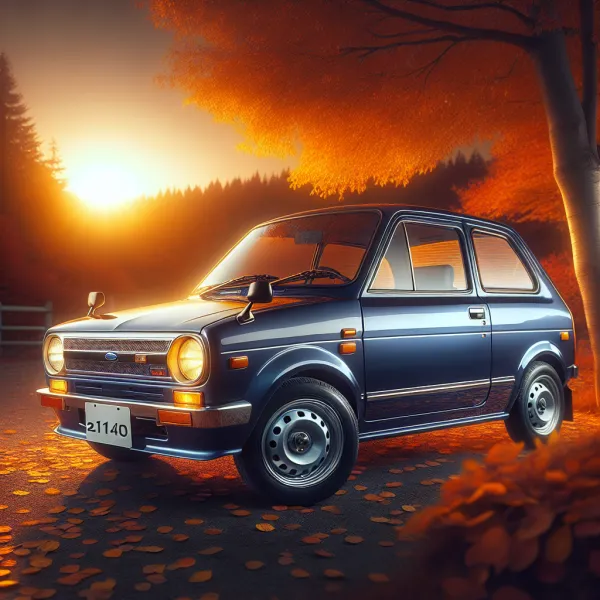Exploring the Subaru Vivio: A Compact Marvel of Japanese Engineering
Exploring the Subaru Vivio: A Compact Marvel of Japanese Engineering
The Subaru Vivio, a kei car that debuted in the early 1990s, remains a beloved icon in the world of compact vehicles. Manufactured by Subaru from 1992 to 1998, the Vivio was designed to meet Japan's kei car regulations, offering a perfect blend of efficiency, practicality, and charm.
A Brief History of the Subaru Vivio
Introduced in March 1992, the Subaru Vivio replaced the Subaru Rex as the company's kei car offering. The name 'Vivio' is derived from the Roman numerals VI, VI, and O, representing the car's 660cc engine capacity. This clever naming convention highlights the car's compact yet capable nature.
The Vivio was available in various body styles, including a three-door hatchback, five-door hatchback, and even a quirky T-top convertible. It quickly gained popularity for its innovative design, reliability, and fuel efficiency, making it a favorite among urban drivers.
Key Features That Set the Vivio Apart
The Subaru Vivio was packed with features that made it stand out in the competitive kei car market:
- Compact Dimensions: The Vivio's small size made it ideal for navigating crowded city streets and fitting into tight parking spaces.
- Efficient Engine: Powered by a 660cc inline-four engine, the Vivio delivered impressive fuel economy without compromising performance.
- All-Wheel Drive (AWD): Unlike many kei cars, the Vivio offered an AWD option, providing enhanced traction and stability in various driving conditions.
- Innovative Design: The Vivio's unique styling and practical interior layout appealed to a wide range of drivers.
Performance and Variants
The Subaru Vivio was available in several trims and configurations, catering to different preferences and needs. The most notable variant was the Vivio RX-R, a sporty version equipped with a supercharged engine producing up to 64 horsepower. This model offered spirited performance while maintaining the car's compact and efficient nature.
Another standout was the Vivio Bistro, a retro-styled version that featured classic design elements reminiscent of vintage European cars. The Bistro's unique appearance made it a collector's favorite.
The Legacy of the Subaru Vivio
Although production of the Subaru Vivio ended in 1998, its impact on the automotive world endures. The Vivio demonstrated that small cars could be both practical and fun, paving the way for future kei car innovations. Its combination of reliability, efficiency, and charm continues to resonate with car enthusiasts and collectors worldwide.
The Subaru Vivio is a testament to the ingenuity of Japanese engineering, proving that great things can come in small packages.
Why the Subaru Vivio Still Matters Today
In an era where compact and eco-friendly vehicles are more relevant than ever, the Subaru Vivio serves as a reminder of the potential of small cars. Its innovative features and timeless design make it a symbol of efficiency and practicality, inspiring modern automakers to push the boundaries of what compact vehicles can achieve.
Whether you're a fan of kei cars or simply appreciate clever engineering, the Subaru Vivio is a car worth celebrating. Its legacy lives on as a shining example of how small cars can make a big impact.
